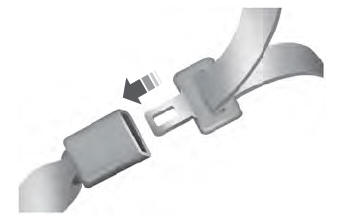Ford Escape 2020-2025 Owners Manual / Active Park Assist / Entering a Parallel Parking Space
Ford Escape: Active Park Assist / Entering a Parallel Parking Space
- Press the active park assist button.
Note: The system detects other vehicles and curbs to find a parking space.
- Use the turn signal lever to search for
a parking space on the driver or
passenger side of your vehicle.
Note: If you do not use the turn signal lever, the system searches for a parking space on the passenger side of your vehicle.
- Drive your vehicle approximately 3 ft
(1 m) away from and parallel to the
other parked vehicles when searching
for a parking space.
Note: A tone sounds and a message appears in the information and entertainment display when active park assist finds a suitable parking space.
- Press and hold the brake pedal.
- Release the steering wheel and shift into neutral (N).
- Press and hold the active park assist button.
- Release the brake pedal to allow your vehicle to park.
Note: You can slow down your vehicle at any time by pressing the brake pedal.
Note: When parallel parking between objects, the system parks closer to the object in front of your vehicle to allow easier access to the luggage compartment.
Note: When parking is complete, your vehicle shifts into park (P).
 Active Park Assist Precautions. Switching Active Park Assist On and Off
Active Park Assist Precautions. Switching Active Park Assist On and Off
Active Park Assist Precautions
WARNING: You must remain in
your vehicle when the system turns on.
At all times, you are responsible for
controlling your vehicle, supervising the
system and intervening, if required...
 Entering a Perpendicular Parking Space. Exiting a Parking Space
Entering a Perpendicular Parking Space. Exiting a Parking Space
Entering a Perpendicular Parking Space
Press the active park assist button.Note: Active park assist
does not recognize
parking space lines and centers your vehicle
between objects...
Other information:
Ford Escape 2020-2025 Service Manual: Diagnosis and Testing - High Voltage Battery, Mounting and Cables - Hybrid Electric Vehicle (HEV)
Diagnostic Trouble Code (DTC) Chart Diagnostics in this manual assume a certain skill level and knowledge of Ford-specific diagnostic practices. REFER to: Diagnostic Methods (100-00 General Information, Description and Operation). WARNING: To prevent the risk of high-voltage shock, always follow precisely all warnings and service instructions, including instructions to depower the..
Ford Escape 2020-2025 Owners Manual: Luggage Compartment
INSTALLING AND REMOVING THE LUGGAGE COMPARTMENT COVER WARNING: Make sure that you properly secure the luggage cover. Failure to follow this instruction could result in personal injury in the event of a sudden stop or crash. WARNING: Do not place objects on the luggage cover. Failure to follow this instruction could result in personal injury or death in the event of a sudden stop or crash. ..
Categories
- Manuals Home
- 4th Generation Ford Escape Owners Manual
- 4th Generation Ford Escape Service Manual
- Symbols Glossary
- Removal and Installation - All-Wheel Drive (AWD) Module - 1.5L EcoBoost (132kW/180PS) – I3 (Y1)/2.0L EcoBoost (177kW/240PS) – MI4
- Electric Parking Brake
- New on site
- Most important about car
Fastening the Seatbelts

Copyright © 2025 www.fordescape4.com
